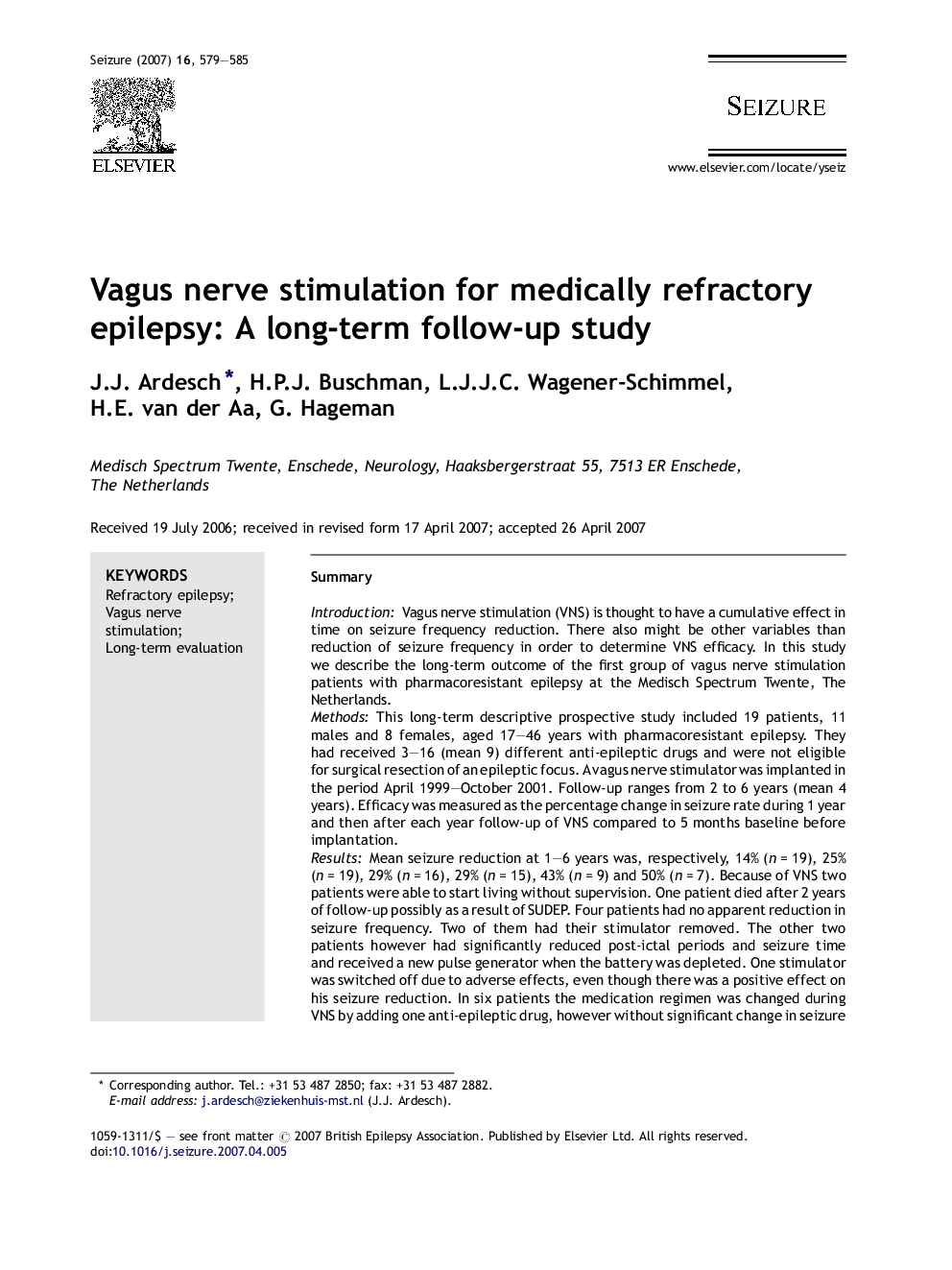| کد مقاله | کد نشریه | سال انتشار | مقاله انگلیسی | نسخه تمام متن |
|---|---|---|---|---|
| 340872 | 548376 | 2007 | 7 صفحه PDF | دانلود رایگان |

SummaryIntroductionVagus nerve stimulation (VNS) is thought to have a cumulative effect in time on seizure frequency reduction. There also might be other variables than reduction of seizure frequency in order to determine VNS efficacy. In this study we describe the long-term outcome of the first group of vagus nerve stimulation patients with pharmacoresistant epilepsy at the Medisch Spectrum Twente, The Netherlands.MethodsThis long-term descriptive prospective study included 19 patients, 11 males and 8 females, aged 17–46 years with pharmacoresistant epilepsy. They had received 3–16 (mean 9) different anti-epileptic drugs and were not eligible for surgical resection of an epileptic focus. A vagus nerve stimulator was implanted in the period April 1999–October 2001. Follow-up ranges from 2 to 6 years (mean 4 years). Efficacy was measured as the percentage change in seizure rate during 1 year and then after each year follow-up of VNS compared to 5 months baseline before implantation.ResultsMean seizure reduction at 1–6 years was, respectively, 14% (n = 19), 25% (n = 19), 29% (n = 16), 29% (n = 15), 43% (n = 9) and 50% (n = 7). Because of VNS two patients were able to start living without supervision. One patient died after 2 years of follow-up possibly as a result of SUDEP. Four patients had no apparent reduction in seizure frequency. Two of them had their stimulator removed. The other two patients however had significantly reduced post-ictal periods and seizure time and received a new pulse generator when the battery was depleted. One stimulator was switched off due to adverse effects, even though there was a positive effect on his seizure reduction. In six patients the medication regimen was changed during VNS by adding one anti-epileptic drug, however without significant change in seizure reduction. Adverse effects were hoarseness and coughing during stimulation. One patient had a temporary paralysis of his left vocal cord.ConclusionWe think that VNS is an effective treatment for pharmacoresistant epilepsy and its positive effect persists during the years of follow-up. Our results suggest that seizure reduction should not be considered as the only variable of importance to describe the outcome of VNS on epilepsy and it is worthwhile to look at other outcome measures.
Journal: Seizure - Volume 16, Issue 7, October 2007, Pages 579–585